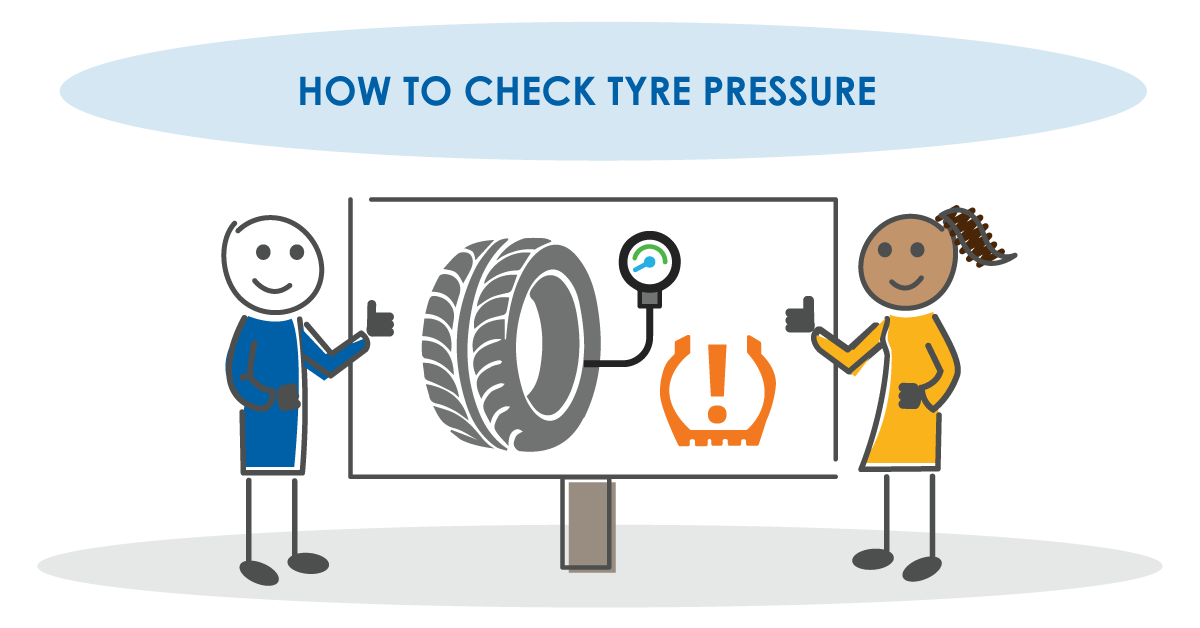
Managing your tyres is a vital part of car maintenance as a driver. Keep on top of them and you’ll enjoy a happier, safer driving experience for longer. Neglect them and you could be replacing them too often or, worse still, putting yourself and other road users in danger.
Here’s how to look after your tyres, why it’s important and what to do in certain situations:
How to check your car’s tyre pressure
Checking the pressure in your tyres is the same across most vehicles – you just need to find a reliable tyre pressure gauge at a local garage or petrol station. Here’s how you do it:
Step 1: Check the recommended pressure for your tyres first
The pressure of your tyres is typically measured in pounds per square inch (PSI) and the ideal measurements can be found in your vehicle handbook.
Be sure you know what numbers you’re looking for on the pressure gauge before you begin.
Step 2: Remove the valve caps and attach the gauge
One tyre at a time, unscrew the plastic cap and attach the pressure gauge until there is no hissing sound coming from the valve. The gauge should then give a reading, which will tell you whether or not the tyre needs air.
Why is it important to check tyre pressure?
Whether you own your vehicle or you got it on a car finance deal, it’s crucial that you keep on top of the tyre pressure as part of your ongoing maintenance.
If you don’t, you run the risk of damage and expenses and even increase the chances of an accident if, for example, a tyre has a blow-out while you’re driving.
High tyre pressure
When the pressure is too high in a tyre, it is essentially under greater strain than it should be, so it’s important to keep on top of this as a responsible driver.
What happens if tyre pressure is too high?
High pressure means less of the tyre is in contact with the road, which reduces traction and wears down the central tread. This can also increase your stopping distance in various conditions.
Low tyre pressure
When the pressure is too low in a tyre, it changes everything from the handling to the heat building up within it, as well as your fuel consumption because of the increased resistance.
Extended periods of driving on underinflated tyres can also increase your stopping distance and the likelihood of an accident.
I’ve got low tyre pressure – what should I do?
To stop your tyres getting too hot (due to the greater amount of flexibility and movement they’ll have if they’re underinflated), you should avoid driving on them until you can inflate them to the correct pressures. Heading to the nearest garage is fine, as long as it’s no more than a few minutes away – they won’t get enough opportunity to overheat that way.
When should tyre pressure be checked and how often?
Always aim to check your tyre pressures at the start of a journey and not in the middle or at the end of one. It’s especially important that you check them ahead of a long drive, so factor in some time to head to the garage before you set off (and don’t forget some loose change too).
You should ideally check tyre pressures once or twice a month. If it’s your car, you’ll be prolonging the quality and comfort of your driving experience if you do. If it’s a hire purchase on car finance, you’ll be responsible for the upkeep of the vehicle for the duration of your agreement, so it’s important to check regularly.
How do I know what the correct tyre pressure is for my car?
The first place to check is in the handbook that came with your vehicle – you can usually find this in the glove box. There may also be a sticker either inside the driver’s door or on the fuel cap, but if not, you can check the manufacturer’s guidelines online or by contacting their customer services team and quoting the numbers on the sidewalls of your tyres.
Where to get tyre pressure checked
Most reputable garages in the UK offer a free tyre check service and will be able to help you measure the pressures there and then. You can either head there or to your local petrol station to do it yourself – there’s usually a coin-operated air pressure pump somewhere on the forecourt.
How to reset tyre pressure gauge
If the tyre pressure indicator appeared on your dashboard and you’ve fixed the issue, most vehicle computers should recognise the new pressures and turn it off.
If that doesn’t happen and the gauge indicates the right pressures, you can manually reset it via the vehicle settings menu. This will be slightly different for each vehicle, but there should be a menu option for tyre management or tyre pressures and a series of instructions for you to reset it yourself. Consult your manufacturer’s guidelines if you run into any issues.
As with any vehicle, proper maintenance is a crucial part of prolonging the life of your tyres. We can’t stress enough how important this is with hire purchase vehicles, too, so be sure to keep on top of your responsibilities as a driver with our helpful guides to car maintenance here and, of course, get in touch if you have any specific questions.



